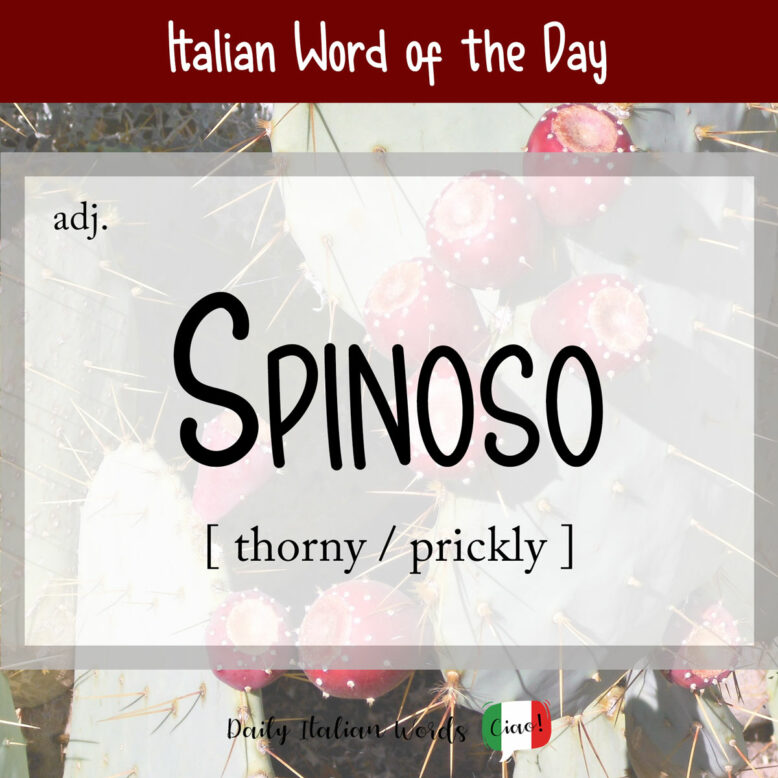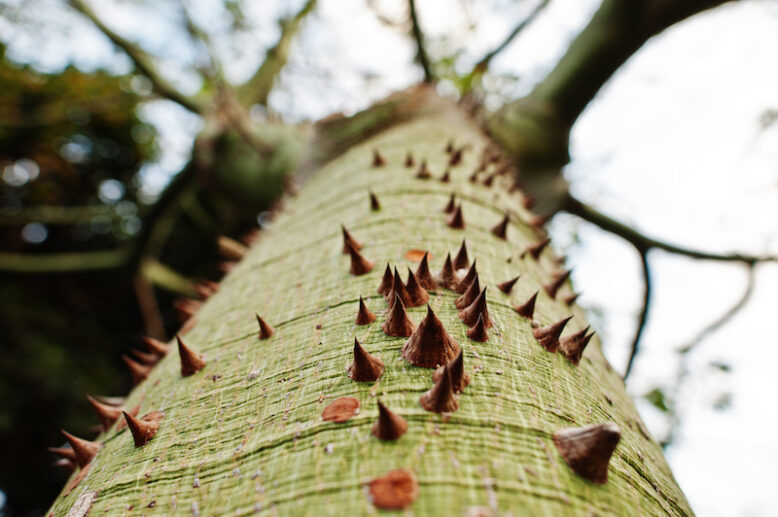Lately my two-year-old son has been very keen on discovering the various plants that grow in our local woodland. Although most plants are safe to touch, there are a few thorny fiends that will give you a nasty prick if you aren’t careful!
Spinoso is the adjective Italians use when they want to describe something that is thorny or prickly. It comes from the Latin spinosus, which in turn derives from spinus (meaning ‘thorn’).

Because it is an adjective, the ending changes according to the gender/plurality of the noun it decribes:
- il cespuglio spinoso = the prickly bush (masculine, singular)
- la pianta spinosa = the prickly plant (feminine, singular)
- i rami spinosi = the prickly branches (masculine, plural)
- le foglie spinose = the prickly leaves (feminine, plural)
Il gambo della rosa è molto spinoso.
The stem of the rose is very thorny.

Similar to the English equivalent thorny, spinoso also has the figurative meaning of difficult or troublesome. In both languages, you can describe a problem as being spinoso / thorny for example. In addition to difficult, spinoso can also mean awkward, sticky or touchy when referring to a situation or topic of discussion.
È un argomento un po’ spinoso. Non ho voglia di parlarne.
It’s a bit of a touchy subject. I don’t want to talk about it.
Did you know that…?
Another term for porcupine, besides the classic istrice, is porcospino, the combination of the Latin porca (pig) + spina (thorn). The English word shares the same origin, although it entered the language via Old French.
Heather Broster is a graduate with honours in linguistics from the University of Western Ontario. She is an aspiring polyglot, proficient in English and Italian, as well as Japanese, Welsh, and French to varying degrees of fluency. Originally from Toronto, Heather has resided in various countries, notably Italy for a period of six years. Her primary focus lies in the fields of language acquisition, education, and bilingual instruction.


